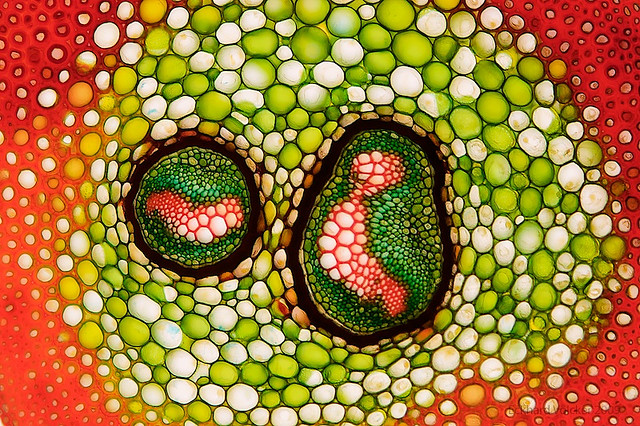FAQ: The science of cell
04 Nov 2016
7 facts about the most basic system of the body
Life is more complicated enough, the foundation of its existence in its present form - is a kind of elementary system, the cell. As they say, "is the life of the cell is not." This idea may be, it is not very new, but it has recently tried to challenge. In fact, of course, and now there is talk, because there are so-called "non-cellular form of life" - viruses, prions. Yes, indeed, the virus can escape from the cell, but, nevertheless, this is a temporary escape from the cell, it is a set of genes that escaped, but he has to go back to last forever.

1. Without cells is the destruction of cells and the cell life is terminated. Life - is a cell. Therefore, the science that studies the cell, fundamentally important. The science of cell - now it is called cell biology, is very old, it is constantly branched off from the different sciences, because the cell can be a lot to learn and very differently. In the entire history of cell biology - which is more than three centuries - separated from it a lot of different sciences.
2. The cells are arranged on the one hand, it is very difficult, and on the other hand - all cells can be divided roughly into two main types: prokaryotic and eukaryotic cells.
Prokaryotic - pre-nuclear forms of life, eukaryotic - real nuclear organisms, to which we belong, people. The principal difference of only one thing: how the cell genome is organized. Either the gene as it "floats" inside the cell as that of prokaryotes: bacteria, cyanobacteria, or as they used to be called, in the blue-green algae, archaea. Or as in eukaryotes: gene (i.e. genes) are surrounded by a special envelope and there is a separate, structurally separate domain cell.
3. The difference is very simple but has far-reaching consequences. eukaryotic cells are able to become more larger and so they have created ecological niches, which were essentially unavailable for prokaryotes. And to do many things that prokaryotes are well able to do. The simplest thing - eukaryotes could be large and, as a result, were able to effectively "eat" prokaryotic cells. Already because of this they went to another evolutionary level. Another thing that really could make eukaryotes and prokaryotes have failed to do - is to create multicellular organisms. That is, organisms that have become more and more able to "eat" not only bacteria, but also other unicellular eukaryotes. Again, the evolution has moved to a new level. Prokaryotes can not. When a gene, genes, genetic information is not isolated, do something very complex and no longer receives.
4. This does not mean that prokaryotes, too, did not try to do that, they have some form of interaction when they form some kind of community, which in many respects resemble multicellular eukaryotic organisms. But basically they are different. In recent years a very actively studied so-called "bacterial films" when membrane bacteria live in a state in which antibiotics are well kill ordinary bacteria, they have no effect. And, accordingly, it is very important for medicine, because these patients also need to somehow treat. A conventional antibiotics can not act. This is a very serious problem. Still, a bacterial film - it's not a multicellular organism! Multicellular organisms - is something else.
Generally speaking about the device cells, it consists of only a few parts. Next will treat all eukaryotes: First, the cell should be separated from the environment by some obstacle. On the one hand, we have a non-cellular environment "undeath" on the other side - the life, the cell. It is the thinnest membrane 10 nanometers thick. These are the same nanotechnology, about which everyone is talking, but nobody has seen them.
The rest of the interior of the cell is divided into two parts: this kernel, where is the molecule of deoxyribonucleic acid, DNA, that is, the genes; and then - all the rest is the nucleus (the cytoplasm). This separation allows you to isolate different processes: here we have a genetic information is somehow implemented; It occurs in the cytoplasm of the other processes, and the like proteins are synthesized
But all three are fundamental parts: the plasma membrane, which separates the cell from not-cell cytoplasm in which there are processes that maintain life of the cell and the nucleus, where the genome of the cell.
5. In fact, the core - is the most important part of the cell, because that is where is the information that makes this cell and which allows the cell to exist from generation to generation. This is very important because genetic information is evolving, changing, constantly occurring mutations complexity, this is a huge, complex processes that have been studied and studied. Genetics, Genomics are developing at an incredible intensity in the XXI century.
It is also important that, when the cells have created a multicellular organism (this happened only in eukaryotes), any fundamentally new quality. Firstly, cells learned differently interact more closely communicate with each other. lot and they are very different in the cells of a multicellular organism. But thanks to the interactions they form a very complicated and very orderly, well-functioning integrated system.
To protect cells from death use Meldonium, Mexidol, Riboxin.
6. To create the multicellular organism, cells were to be different, that one performs one function and the other - the other. If it's a single-celled organism, any unicellular ciliate - it is very difficult organized cell that simultaneously and body. In a multicellular organism different cells took on different roles and so have become different. And they had to learn how to coordinate their actions, often at a very great distance. The human cell may be a meter and nevertheless send a signal to each other. Miscellaneous information walks through the body.
And when there was a multicellular organism, cells had to learn how to die consciously. If single-celled organisms - they are potentially immortal. The cell divides, one produced two, two - four, but in principle there is a constant transfer of genetic information, if the cell does not die one way or another "violent" way.
In a multicellular organism most of the cell is doomed! The genetic information on them will not give this information pacifier. With the emergence of multicellular organisms death issue becomes very relevant, many cells must constantly die, because some cells are short-lived, while others are long lasting. Brain cells live for a lifetime, and other cells live and work only a few days, and then die.
7. There is even a separate science studying individual cells formed complexes - histology. Some believe that it is - part of cell biology, some separated, because it is - a really new quality and there is no longer important single cell, it is important to their community, because in a multicellular organism cells have learned to do that, it would seem, they can not do. They are small and communicate at a distance of a meter. They take care of their genome, and they have learned to die, because it is necessary for the whole organism.
And the whole range of issues: the structure of the cell, how it functions at the molecular level how the genetic information which is important to preserve, passed down from generation to generation and how cells communicate with each other as they are fed as multiply, they produce a multicellular organism - this one range of issues, and is the subject of cell Biology, histology and some other disciplines that stood out from the cell biology of the three hundred years of its history.

 Cart
Cart





